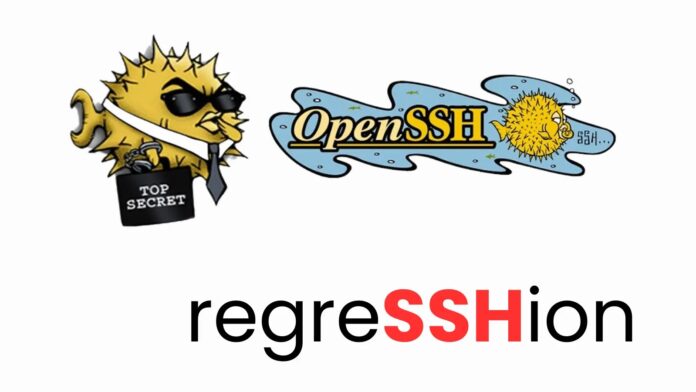[ad_1]
The Qualys Threat Research Unit has identified a newly discovered vulnerability in OpenSSH, dubbed “regreSSHion” (CVE-2024-6387).
This critical flaw, which allows unauthenticated remote code execution (RCE) as root, affects over 700,000 Linux systems exposed to the internet.
The regreSSHion vulnerability is a signal handler race condition in OpenSSH’s server (sshd) that can be exploited to execute arbitrary code with the highest privileges.
This flaw is particularly concerning because it does not require user interaction and affects OpenSSH’s default configuration.
This vulnerability is a regression of a previously patched issue (CVE-2006-5051) reintroduced in October 2020 with the release of OpenSSH 8.5p1.
"Is Your System Under Attack? Try Cynet XDR: Automated Detection & Response for Endpoints, Networks, & Users!"- Free Demo
If exploited, regreSSHion could lead to a complete system takeover, allowing attackers to install malware, manipulate data, and create backdoors for persistent access.
This could facilitate network propagation, enabling attackers to compromise other vulnerable systems within an organization.
The vulnerability poses a significant risk as it allows attackers to bypass critical security mechanisms such as firewalls and intrusion detection systems, potentially leading to significant data breaches and leakage.
Exposed OpenSSH Instances
Qualys researchers used internet scanning services like Censys and Shodan to identify over 14 million potentially vulnerable OpenSSH server instances exposed to the internet.
Anonymized data from Qualys customer data revealed that approximately 700,000 external internet-facing instances are vulnerable, accounting for 31% of all internet-facing instances with OpenSSH in the Qualys global customer base.
The vulnerability arises from sshd’s SIGALRM handler calling various sensitive functions such as syslog() in an asynchronous way when an attempted connection fails to pass authentication within the LoginGraceTime period.
This can lead to heap corruption, which can be exploited to execute arbitrary code with root privileges. The flaw is particularly challenging to exploit due to its remote race condition nature, requiring multiple attempts for a successful attack.
Mitigation Steps
To mitigate the risk posed by regreSSHion, organizations are advised to:
- Patch Management: Apply patches for OpenSSH immediately and ensure continuous update processes.
- Enhanced Access Control: Restrict SSH access via network-based controls.
- Network Segmentation and Intrusion Detection: Segregate networks and deploy monitoring systems to detect exploitation attempts.
- Temporary Mitigation: If patches cannot be applied immediately, configure LoginGraceTime to 0 to prevent exploitation, although this exposes systems to potential denial-of-service.
While no active exploits have been seen in the wild, the potential impact of this flaw necessitates urgent action from system administrators to protect their systems.
How to Scan for regreSSHion Vulnerability
Organizations can use several tools to scan for the regreSSHion vulnerability (CVE-2024-6387) in their systems. Here are some of the most effective tools available:
1. CVE-2024-6387_Check Script
This is a lightweight and efficient tool designed specifically to identify servers running vulnerable versions of OpenSSH.
It supports rapid scanning of multiple IP addresses, domain names, and CIDR network ranges.
The script retrieves SSH banners without authentication and uses multi-threading for concurrent checks, significantly reducing scan times. The output provides a clear summary of the scanned targets, indicating which servers are vulnerable, not vulnerable, or have closed ports.
2. Qualys Vulnerability Management
Qualys offers a comprehensive vulnerability management tool that can scan for a wide range of vulnerabilities, including CVE-2024-6387. It provides extensive protection and is capable of aggregating and prioritizing cyber risks across all assets and attack vectors.
Are you from SOC/DFIR Teams? - Sign up for a free ANY.RUN account! to Analyse Advanced Malware Files
[ad_2]
Source link
